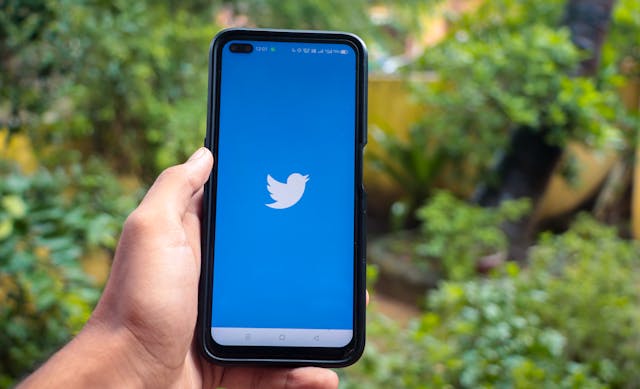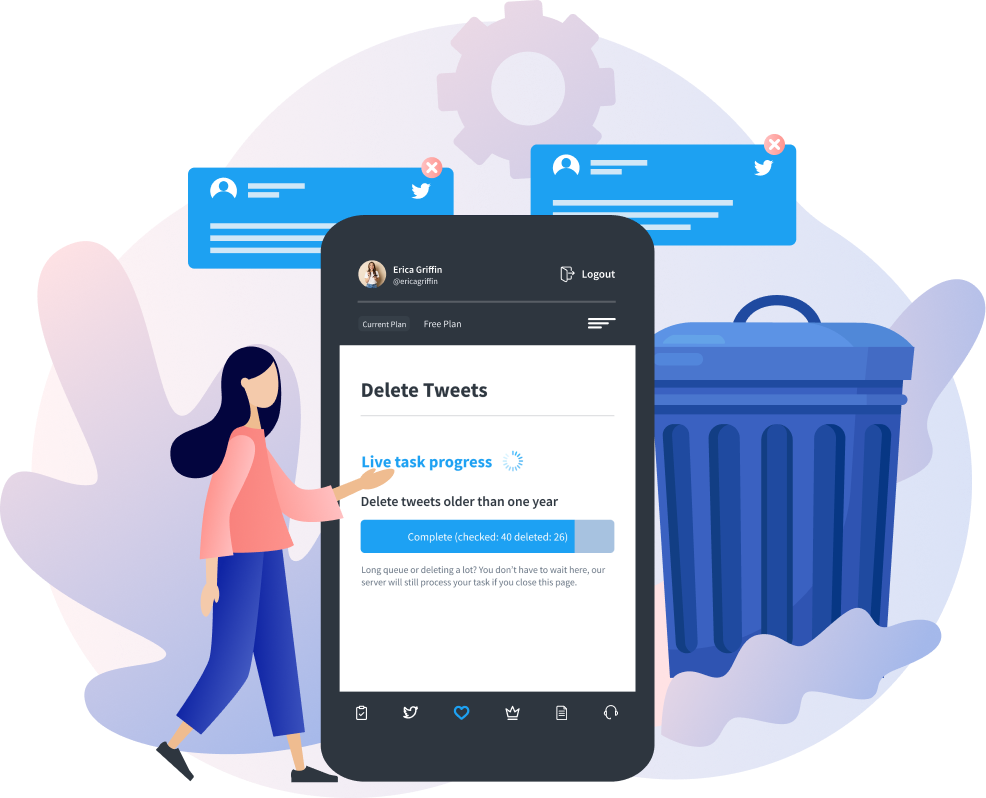A virus is a harmful code that replicates itself and spreads from one device to another. It’s quite easy to contract a virus while surfing the internet. If you use the San Francisco-based Twitter application, you may wonder if your device can catch a virus on Twitter.
Viruses are quite dangerous as they can crash devices, corrupt files, and delete information. Hackers can also use viruses to steal data, leading to real-world harm for you and your device. Viruses generally are used for cybercrimes, and their effect depends on their nature, as there are different types. Find out how viruses spread and how to avoid them on X.

Can You Get a Virus on Twitter?
Yes, you can get a virus on Twitter. Although this doesn’t happen often, you should keep your guard up and be careful as you interact with posts or people on the platform. A virus attack often has dangerous consequences and can quickly spread from your phone to other connected devices.
There are different kinds of viruses. You can easily catch a virus when interacting with harmful content and may not even know when this happens. Hence, activating X’s data protection features and security updates, like the two-factor authentication, is important.
Though this doesn’t give full assurance against malware attacks, it offers protection to your account. However, note that a text post cannot spread viruses. It can only prompt you to open malicious links or redirect you to infected websites through false claims.
If you mistakenly open an infected item, your device’s security system weakens, making it easy for more malware to infiltrate. If this happens, trace the account that posted malicious content and block that Twitter user immediately.
A browser hijacker is a common virus that spreads on Twitter. This term refers to viruses that can alter your homepage and search settings and redirect you to a devious website.
This website could be a phishing system that contains adware or spyware. It can also contain resident viruses, which are difficult to detect as they hide until an action triggers them.
Additionally, malware can infect the files responsible for running your device’s operating system, causing it to lag while also causing other issues. The effect of virus attacks is chaotic as they aid the perpetuation of cybercrime. Therefore, being mindful while interacting with Twitter posts and retweeting is important.

Can Clicking Inappropriate Files on Twitter Get You a Virus?
Yes, your device can become infected with a virus when you interact with inappropriate files on Twitter. However, distinguishing which are good and bad files is challenging because they all appear the same.
Viruses can disguise themselves as media files, thereby deceiving unsuspecting users. Since viruses often attach themselves to internet files, they activate when you download them. Sometimes, you can contract the virus by clicking the file, but this rarely happens, thanks to Twitter’s security measures.
When you open or download a compromised data file, the virus becomes active and replicates itself. However, even though viruses multiply, they are sometimes difficult to eradicate as they can change their code and appearance. This change is common with polymorphic viruses.
The effects of a virus depends on how the hacker programs it to act. Some may affect the host device alone, others may spread and some can execute fraudulent activities. Therefore, if someone sends you a file, ensure you know the sender before opening it.
Try to confirm that the file is from the actual account owner and not a fake or Twitter bot account.
If you didn’t request any file, you can ask the sender to explain the piece of content in the file. If their explanation convinces you, then download the file. However, it’s best to have antivirus software on your phone to ensure safety.

Can a Video on Twitter Give You a Virus?
Users can encounter a virus through Twitter videos. Downloadable visual media such as videos can serve as a host for viruses. Remember that malware often attaches itself to useful programs, files, and applications for an easy disguise.
Therefore, while you innocently play or watch a Twitter video, malware can gain access to your device. You don’t need to perform any action to trigger the virus, thanks to drive-by download attacks.
Your device can become infected just by swiping past an infected video. Drive-by attacks use outdated software versions and flaws to infiltrate the system and spread to users.
You don’t need to worry about this if you frequently update your app whenever an upgrade is available. However, you must note that the possibility of catching viruses on X doesn’t mean the website is unsafe.
Twitter is a safe platform for interacting and networking with your target audience and other users. However, no website is completely safe from virus attacks and security vulnerabilities. Nonetheless, Twitter is more secure than several other social media platforms.
If you doubt this, you can read about the rate of virus attacks on X compared to other websites. Although the chances of contracting a virus by watching a Twitter video are low, it’s possible.

Are Direct Messages on Twitter Safe From Viruses and Malware?
No, direct messages on Twitter aren’t safe from viruses. Sending Twitter DMs is a common strategy for spreading viruses. Therefore, if you aren’t cautious, you can open a DM, infecting your device with a corruptive virus.
To avoid this, people alter their direct messaging settings to control who communicates with them. However, the people you follow will always be able to DM you, so protecting your Twitter account privacy is essential. When you activate a private Twitter profile, you can screen and accept or reject followers accordingly.
If you let your guard down, you’ll be susceptible to receiving spam messages with phishing links. Hackers can also send you Trojan links, which are difficult to detect. Opening these automatic links or downloading compromised items from your DM risks corrupting your device and causing your smartphone to malfunction.
Files can also go missing, and the virus can allow unauthorized access to your device. For most people, their devices hold a lot of vital information, which, if exposed, can put them at risk.
Worse still, hackers can use viruses to collect your details, which will aid them in identifying you. They may also hack your account for nefarious purposes, gain access to your financial details, and wipe your bank account.
Knowing all this, you should alter your Twitter settings to prevent strangers from texting you. But if you prefer having an open and accessible profile, analyze each stranger’s profile before opening their message.
However, the previous rules don’t guarantee the safety of your Twitter DMs from viruses. Hackers can access your follower’s account and use it to DM you. As a result, be cautious and put various security measures in place.

Signs of a Twitter Virus Attack
Now that you know the various possible ways of getting a virus from Twitter, you should also learn its symptoms. Different tell-tale signs can notify or alert you of a virus attack.
However, many Twitter users are ignorant of the symptoms of a virus attack. Therefore, they fail to curb the negative effects of a virus attack quickly, giving it time to replicate and spread.
Therefore, once you notice any signs, you should take quick action to prevent further virus spread. That said, find below 10 common signs of a virus infection:
- Sudden changes in your browser’s web page, especially if you use Twitter’s web version
- Rampant ads appearing
- Messages from your profile to other accounts which you didn’t send.
- Crashing of your device’s operating system
- Your device begins to lag and execute tasks slowly
- The frequent appearance of different kinds of error messages
- Additional devices connected to your Twitter account from unusual login locations
- New updates in your profile information that you didn’t post
- Incoming spam notifications
- Twitter comments and replies from your account that you did not send
Generally, any unusual or suspicious activity related to your account is a sign of a malware attack. If you notice the above signs, install a strong antivirus program like Avast on your device.
Tips for Avoiding Virus Attacks on X
You never know when you might encounter a virus. Worse still, you can contact an online virus through Twitter posts, videos, and DMs. Thus, you must constantly be alert to safeguard your Twitter account and data.
There’s no single action to avoid all kinds of content malware. Rather, you must employ various tactical privacy and safety measures to avoid virus attacks. That said, find below 12 ways to avoid a Twitter virus attack:
- Activate X’s account privacy and security settings.
- Use a strong antivirus or data breach protection software to safeguard your Twitter data.
- Don’t open links or attachments from strangers. Always confirm the authenticity of the sender and attachment.
- Learn to identify hacked accounts so you don’t compromise your account by engaging with their content.
- If an account posts corrupt links or media, report it to Twitter.
- Avoid following or interacting with Twitter spam bot accounts, as most are malicious.
- Examine and analyze all pop-up ads before clicking or opening them.
- Do not interact with bot accounts.
- Keep your current password private to limit the possibility of hackers accessing your account and contaminating it with viruses.
- Be as cautious as eagle-eyed users when integrating third-party apps into your Twitter account. Some such apps are vulnerable to viruses.
- Do not open random automatic links from unverified sources on Twitter
- If you unknowingly or mistakenly repost a message with an infected link, quickly delete the post(s).
If you observe these instructions, you can protect your device and data from virus attacks.
Get Rid of Suspicious Links and Posts Using TweetEraser
Assuming you fall prey to a virus attack through hacking and regain your account, you must perform a clean sweep. Doing this will help you erase all traces of suspicious activity on your account. To clean up your account, you must delete all compromising tweets.
You can also protect your viewers and followers from virus attacks. Also, if you’re observant, you might notice and suspect fishy messages in your Twitter chat. If you can’t verify the authenticity of such messages, it’s best to avoid opening them.
Rather, delete such messages immediately. Instead of indulging in the time-consuming process of deleting messages and tweets individually, you can automate tweet deletion. However, to do this without complications, you need an effective third-party Twitter management tool like TweetEraser.
While other third-party tools may compromise your data, TweetEraser protects all information and ensures data privacy without violating Twitter’s online rules. Use TweetEraser to delete fishy posts and messages to avoid getting a virus on Twitter!
FAQ
What pieces of content can spread malware on Twitter?
Malware on Twitter doesn’t spread through text posts but content like videos and images. However, people often encounter viruses when they click on suspicious links that redirect them to malicious websites.
Do online virus attacks pose real-world harm?
Yes, virus attacks can lead to real-world harm. Hackers can use viruses to steal people’s identities and commit crimes.
How do I protect my Twitter account from viruses?
The best protection measure is to install anti-breach software on your device and activate two-factor authentication. It also helps to set a strong password and limit your interaction with suspicious accounts.





